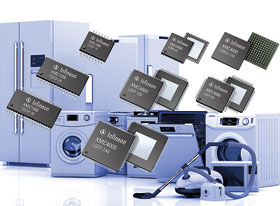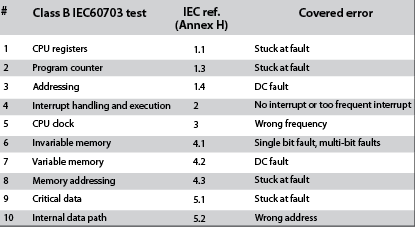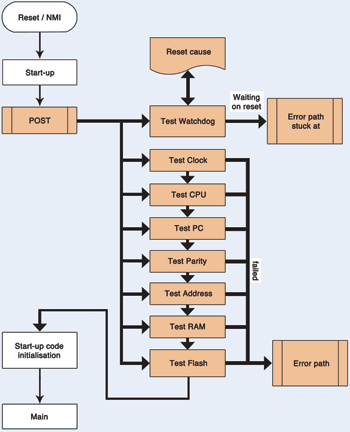

The International Electrotechnical Commission (IEC) has introduced the IEC60730 safety standard for household appliances. For microcontroller systems, the IEC60730 Annex H defines the details of tests and diagnostic methods to ensure proper and safe operation of embedded software and hardware in household appliances.
Infineon Technologies provides a free, VDE-certified IEC60730 self-test library for its XMC1000 and XMC4000 families of industrial 32-bit microcontrollers (MCU). This enables the devices to satisfy the requirements defined by IEC60730 Class B, a standard which is mandatory since October 2007 for the safety of household appliances sold in Europe.
The standard affects all electronic controls used in home appliances to prevent unsafe operation, eg, cookers and motor controls for dishwashers, refrigerators, dryers, cloth washers and fans. In order to get household products certified, embedded microcontrollers have to perform certain self-tests to prove that they are running correctly at all times.
The XMC MCUs integrate all hardware functions to meet Class B requirements, such as a CRC engine and watchdog with an independent clock. These features make an application safer without additional cost and overhead.
Particularly useful are the embedded Flash module with its hardware error correction (ECC), and the invariable memory tests which are done without the need to implement the time consuming CRC-memory checker routines. The ECC can correct single-bit errors and can signal such events to the application with every Flash access. This increases CPU performance, frees up memory space and makes user software easier and safer.
The microcontrollers come with a sophisticated clock supervisory feature. The clock control with its on-chip oscillator watchdog and PLL (available in XMC4000) can detect clock faults, such as the loss of lock, or double and half frequency. If clock failure occurs, the system is automatically brought into a safe state and a signal is sent to the event application.
In addition to the startup tests, such as reset mechanism, memory test (RAM, Flash, ECC and parity), clock system test (source, PLL and oscillators) and core tests, a rich set of runtime tests is provided. As a consequence, test routines on the CPU and on the microcontroller peripherals evaluated by a safety period monitoring mechanism ensure exact achievement of the Class B requirements on extremely high diagnostic coverage.
The modular library design allows easy integration of startup tests and runtime tests into the application software or the customers’ software designs.
IEC60730 Class B tests
The Class B standard defines 14 components, of which 10 are relevant for single-chip microcontrollers. Table 1 summarises the required components to be tested and monitored to ensure that the system complies with the Class B specifications.

The Infineon Class B Library provides routines which can be obtained by the user application to check the system at startup or periodically during runtime to ensure correct operation is maintained. These include CPU and RAM tests, Flash tests, clock tests and interrupt tests.
These startup and runtime tests in the Class B library can be easily integrated into the application software due to its modular library design.
Before the microcontroller is initialised, the pre-operational POST tests must be performed to test the basic functions of the chip. Basic information like the reset cause is checked and a second reset is performed by the watchdog timer (WDT) test.
The POST function is called from the assembler startup code. POST will restart the micro-controller, which leads to total destruction of the volatile memory content. Figure 1 describes the POST related tests in a sequence. In a typical application test, the application runs a fully featured POST test and continues with the BIST runtime test in main.

For more information contact Davis Moodley, Infineon Technologies, +27 (0)11 706 6099, [email protected], www.infineon.com

© Technews Publishing (Pty) Ltd | All Rights Reserved